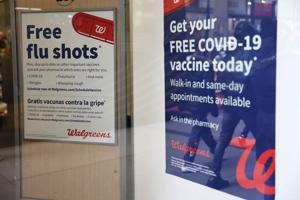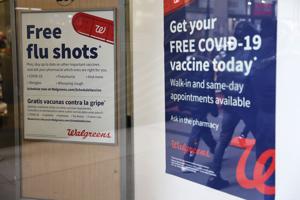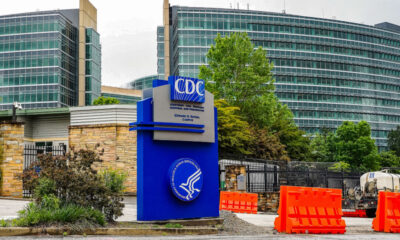Health
Bird Flu Threat Fuels Innovative Phage Therapy Research

The emergence of highly pathogenic avian influenza A (H5N1), commonly known as bird flu, is prompting significant research into phage therapy as a potential solution to mitigate its impact. With nearly a 100% mortality rate among infected birds, the U.S. Department of Agriculture (USDA) reports that approximately 168 million birds have perished since the outbreak began in 2022. The situation has escalated, with cases reported across all 50 U.S. states and spillovers into other species, including dairy cattle and marine mammals.
The rise of human infections linked to H5N1 has raised alarms among health officials. According to the Centers for Disease Control and Prevention (CDC), there were 70 documented cases of human infections between March 2024 and May 2025, resulting in one confirmed death. While human infections remain rare, the potential for H5N1 to evolve and cause a pandemic cannot be overlooked.
Phage Therapy: A Promising Response
The intersection of viral and bacterial infections associated with bird flu has sparked renewed interest in bacteriophage therapy. This innovative treatment uses viruses that specifically target and destroy bacteria, potentially offering a dual solution to combat secondary infections that often complicate severe influenza cases.
Dr. Steven Theriault, CEO of Cytophage Technologies, emphasizes the advantages of phage-based vaccines, noting their ability to produce a consistent stream of vaccine particles. “Unlike typical lytic phages, these filamentous phages are extruded continuously,” he explains. This technique allows for a more sustained immune response, as the bacteria effectively become “miniature phage factories.”
Phage-based vaccines are not only efficient but can also be stored at room temperature, simplifying distribution challenges. Theriault highlights the speed at which phages can be adapted, stating, “In contrast to the several months required to retool mRNA vaccines, phages can be modified in just a few days.” This rapid adaptability may prove crucial in addressing evolving outbreaks like H5N1.
Targeting Secondary Infections
The threat of secondary bacterial infections following severe viral illnesses, such as bird flu, is another area where phage therapy could provide substantial benefits. Amanda Burkardt, CEO of PHIOGEN, points out that phage-based therapies represent a significant shift in treatment paradigms. Burkardt’s company is developing “dual-action” phages designed to not only combat bacterial infections but also prime the immune system against future threats.
“While most phage companies intentionally avoid immune-stimulating phages, we take the opposite approach,” she states, highlighting their strategy to select phages that actively engage the immune response. These therapies aim to treat immediate bacterial co-infections while simultaneously reducing the risk of recurrence during recovery.
Armata Pharmaceuticals is also making strides in this area, focusing on developing fixed multi-phage cocktails targeting antibiotic-resistant pathogens. Dr. Sebastien Lemire, Director of Discovery and Engineering at Armata, explains that phages are highly species-specific, allowing them to effectively eliminate targeted bacteria without disrupting the normal microbiome.
Innovative Approaches with AI and Big Data
The challenges posed by phage therapeutics, including the need for broad libraries and deep screening, are being addressed by companies like BiomX. CEO Jonathan Solomon describes their BOLT platform, which integrates artificial intelligence with experimental microbiology to create tailored phage therapies. This system allows for the systematic identification of effective phage candidates against specific bacterial targets.
“What makes these programs especially powerful is that each target represents a ‘pipeline in a product,’” Solomon notes. This flexibility could enable the rapid development of phage therapies to combat the bacteria responsible for secondary infections linked to severe viral diseases, including bird flu.
As the threat of bird flu evolves, so does the research landscape. The work being done in phage therapy not only highlights the potential for innovative treatments but also underscores the need for continued vigilance and proactive measures to safeguard public health. The combination of bacteriophage therapy and ongoing surveillance efforts may ultimately provide a robust response to the challenges posed by H5N1 and similar infectious diseases.
-

 Technology4 months ago
Technology4 months agoDiscover the Top 10 Calorie Counting Apps of 2025
-

 Health2 months ago
Health2 months agoBella Hadid Shares Health Update After Treatment for Lyme Disease
-

 Health3 months ago
Health3 months agoErin Bates Shares Recovery Update Following Sepsis Complications
-

 Technology3 weeks ago
Technology3 weeks agoDiscover 2025’s Top GPUs for Exceptional 4K Gaming Performance
-

 Technology2 months ago
Technology2 months agoElectric Moto Influencer Surronster Arrested in Tijuana
-

 Technology4 months ago
Technology4 months agoDiscover How to Reverse Image Search Using ChatGPT Effortlessly
-

 Technology4 months ago
Technology4 months agoMeta Initiates $60B AI Data Center Expansion, Starting in Ohio
-

 Technology4 months ago
Technology4 months agoRecovering a Suspended TikTok Account: A Step-by-Step Guide
-

 Health4 months ago
Health4 months agoTested: Rab Firewall Mountain Jacket Survives Harsh Conditions
-

 Lifestyle4 months ago
Lifestyle4 months agoBelton Family Reunites After Daughter Survives Hill Country Floods
-

 Technology3 months ago
Technology3 months agoUncovering the Top Five Most Challenging Motorcycles to Ride
-

 Technology4 weeks ago
Technology4 weeks agoDiscover the Best Wireless Earbuds for Every Lifestyle





















